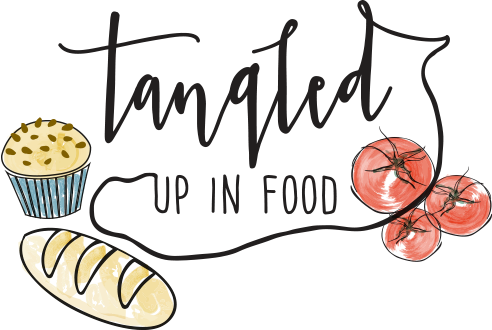This post is sponsored by Untiedt's Vegetable Farm, Inc. I've been an Untiedt's shareholder since their first CSA season in 2011, and I'm thrilled to be working with them to promote CSA subscription. You can learn more, read their frequently asked questions page, and purchase a half or full CSA share on Untiedt's website. As always, all content and opinions are my own.
This season will be my seventh year as a CSA shareholder. Each year, I gets lots of curious questions from family and friends: how does this whole CSA thing work? What do I get in my CSA box each week? And most importantly, what do I do with all that produce?
If you're new to CSA shares, or if you're thinking of subscribing but want to know a little more, here's everything you need to know.
What is a CSA, anyway?
CSA stands for Community Supported Agriculture. At the beginning of the growing season, consumers purchase a CSA share from a local farmer. Throughout the growing season (typically weekly) the farmer provides a portion of the harvest to CSA shareholders.
Okay, but why should I subscribe to a CSA?
To begin with, purchasing a CSA is a great way to support your local farmer--it provides an influx of cash at the beginning of the season, when it's most needed. A CSA also allows you to support a farmer who's practicing sustainable agriculture. Wish you were eating healthier? A CSA is an easy way to add more fruit and vegetables to your diet, and is also a convenient way to try out some new produce. If you're still not convinced, here's a post with 10 great reasons to subscribe to a CSA.
What will I get in my share?
It's different each week! The produce in your CSA box varies throughout the growing season: expect lots of lettuce at the beginning of the year, winter squash at the end, and corn, tomatoes, zucchini, and cucumbers in between. Since each crop is only available when it's at its best, a CSA is a wonderful way to learn about what grows when in your particular area.
Untiedt's grows over 50 different fruits and vegetables, and they try to include 8 different items in each week's share.
How do I get my share?
It varies based on the particular CSA you subscribe to--typically, you need to pick up your share at the farm or from a central drop-off location. Untiedt's offers over 50 drop sites. Some are open to the public, including many of their farm stands, several Kowalski's markets, Valley Natural Foods in Burnsville, and the Minneapolis Farmer's Market (here's a handy list of all the public drop sites). Untiedt's also delivers to dozens of corporate drop sites for employees of specific companies--it doesn't get more convenient than that!
But what will I do with all those vegetables?
Getting through a box of produce each week can be daunting, especially if you're not used to eating many vegetables. I've been doing this for several years, and I still have occasional moments of panic when faced with an abundance of kale. My best advice is to plan your meals around your CSA box, so you can enjoy your produce when it's fresh and tasty. I also try to incorporate vegetables into every meal--tomatoes can be added to omelettes, carrots make great snacks, and a salad is an easy lunch. Finally, I use my freezer to stash away whatever I can't eat right away. There are lots of tips in this post about making the most of your CSA share.
What if I don't like kale/tomatoes/zucchini/whatever?
Give it a try anyway--for years, I thought I didn't like carrots. Actually, the problem was how I was cooking them. Steamed carrots still don't do it for me, but I've discovered I love roasting them. If you don't like a particular vegetable, try preparing it in a different way or finding a new recipe that looks interesting. For example, I'm not a huge fan of chard, but I do love this mushroom, chard, and noodle soup.
If a particular vegetable just isn't your thing, you can always gift it to a willing neighbor, friend, or co-worker. But you might be surprised by how much you like kale (or tomatoes, or zucchini) when you try it out in a new recipe.
Are CSAs expensive?
Subscribing to a CSA is a significant investment up front--Untiedt's 2017 rate is $825 for a full share (about $49 per week, feeds 4-6) and $450 for a half share (about $27 per week, feeds 2-3). However, I've found that subscribing to a CSA is often a much better value per week than buying produce at farm stands or farmer's markets.
How do I sign up?
Registration for the 2017 season is now available on Untiedt's website.
Thank you to Untiedt's for sponsoring this post.
Further reading:
